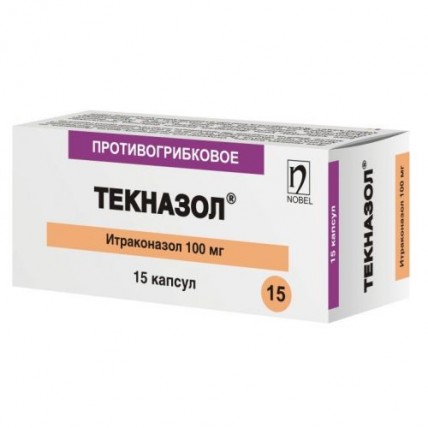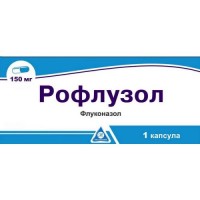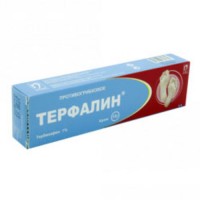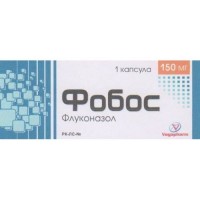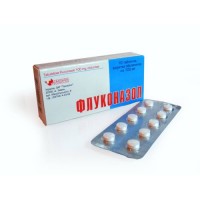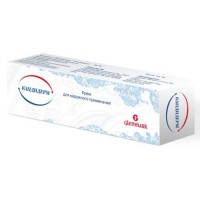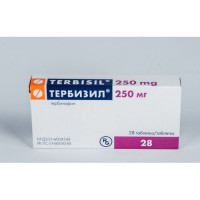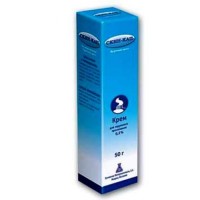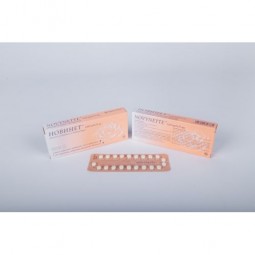Teknazol 15's 100 mg capsule
- $44.80
The instruction for medical use of Teknazol® medicine the Trade name of Teknazol® the International unlicensed name Itrakonazol Lekarstvennaya a form of the Capsule, 100 mg Structure One capsule contains active agent - itrakonazol 100 mg, excipients: hydroksipropilmetiltsellyuloza, polyethyleneglycol, neutral micropellets, structure of the capsule: E 150 caramel, gelatin, E122 azoruby, the patent blue V E 131, the titan E 171 dioxide the Description Solid gelatin capsules with the transparent body light brown and an opaque lid of pink color. Contents of capsules - spherical micropellets of white or light-cream color. Pharmacotherapeutic group Antifungal means of systemic action. Triazole derivatives the Code of automatic telephone exchange J02AC02 the Pharmacological Pharmacokinetics Later properties of intake the absolute bioavailability of the drug Teknazol® is about 55%. The maximum bioavailability is observed at joint reception with food. At reception of a double dose of drug the increase in concentration of an itrakonazol in blood plasma is observed three times. Текназол® it is mainly metabolized in a liver, the main metabolite is hydroksiitrakonazol. Текназол® contacts proteins of blood plasma for 99.8%, and hydroksiitrakonazol for 99.5%. Текназол® it is distributed in different body tissues. Concentration of an itrakonazol in lungs, kidneys, a liver, a bone tissue, a stomach, a spleen, skeletal muscles by 2–3 times exceeds its concentration in blood plasma. Accumulation it in skin by 4 times exceeds its level in blood plasma. Therapeutic concentration of an itrakonazol in skin remains for 2–4 weeks after the termination of a 4 weeks course of therapy. Therapeutic concentration of an itrakonazol in a keratin of nails is reached in 1 week from an initiation of treatment and remains for 6 months after end of a 3-month course of treatment. Therapeutic concentration in tissues of a vagina remain for 2 days after the termination of a 3-day course of treatment in a dose of 200 mg/days and 3 days after one-day use in a dose of 200 mg 2 times a day. Discharge also happens to a secret grease and sweat glands of skin. Excretion of initial substance with excrements varies between 3-18% of the accepted dose. Renal excretion of not changed introkonazol is less than 0.03% of the accepted dose. About 40% of the accepted dose are removed as inactive metabolites with urine. Influence on concentration of an itrakonazol in blood plasma in a liver failure is not established. In this regard, patients with a liver failure have to be under careful observation in case of use of an itrakonazol. The pharmacodynamics of Teknazol® is the antifungal drug belonging to group of triazoles, possesses a wide range of antifungal action, influences by means of inhibition of synthesis of ergosterol which is a vital component of a cell wall of fungi. Has fungicide effect. The researches in vitro showed that Teknazol® inhibits cytochrome-P450-dependent synthesis of ergosterol. It is active concerning dermatophytes (Trichophyton spp., Microsporum spp., Epidermophyton floccosum), yeast-like mushrooms of Candida spp. (including C.albicans, C.glabrata, C.krusei), mold mushrooms (Cryptococcus neoformans, Aspergillus spp., Histoplasma spp., Paracoccidioides brasiliensis, Sporothrix schenckii, Fonsecaea spp., Cladosporium spp., Blastomyces dermatitidis), etc. Indications - mycosis of smooth skin - mycosis of inguinal area - mycosis of feet - mycosis of brushes - multi-colored deprive - vulvovaginal candidiasis - aspergillomycosis - a zymonematosis - histoplasmosis - ezofagalny candidiasis - oropharyngeal candidiasis - a cryptococcosis - a coccidioidomycosis - chromomycosis - an onychomycosis - a paracoccidioidomycosis - a sporotrichosis. The route of administration and doses of the Teknazol® Capsule are intended for oral administration and have to be accepted right after food, for the best absorption. The dose over 200 mg a day, has to be divided into two receptions. Mycosis of smooth skin, mycosis of inguinal area of 100 mg (1 capsule) once a day within 15 days. Mycosis of feet, mycosis of brushes of 100 mg once a day for 30 days. Multi-colored deprive of 200 mg (2 capsules) within 7 days once a day. Aspergillomycosis of 200 mg one or twice a day for at least 2-5 months. Zymonematosis or histoplasmosis of 200 mg once a day. The dose can be raised to 400 mg on 100 mg, in cases of a combination of a fungal infection. Ezofagalny and oropharyngeal candidiasis of 100 - 200 mg (1-2 capsules) once a day for 4 weeks. Sick AIDS and to patients with a neutropenia: 200 mg (2 capsules) daily for 4 weeks. Chromomycosis of 100-200 mg (1-2 capsules) once a day within 3-6 months. A coccidioidomycosis of 200 mg twice a day for 6 weeks. Inactive kriptokokkalny meningitis of 200 mg (1-2 capsules) once a day within 2 months – 1 years. Inactive histoplasmosis of 200 mg (2 capsules) twice a day or 200 mg (2 capsules) once a day within 8 months. A cryptococcosis of 200 mg one – twice a day for 2 months – 1 years. A paracoccidioidomycosis of 100 mg once a day for 6 months. A sporotrichosis of 100 mg once a day within 3 months. A mycotic keratitis of 200 mg (2 capsules) once a day within 21 days. Vulvovaginal candidiasis of 200 mg (2 capsules) once a day within 3 days or 200 mg twice a day in 1 day. An onychomycosis of 100-200 mg (1-2 capsules) once a day within 3-6 months. One course of treatment is expected 1 week on 200 mg (2 capsules) once a day. For onychomycoses of brushes 2 courses are conducted, for an onychomycosis of brushes and feet 3 courses are conducted. Between courses drug should not be used. The efficiency of treatment is estimated in 2-4 weeks after the therapy termination (in mycoses), in 6-9 months - in onychomycoses (in process of change of nails). It is caused by slow elimination of an itrakonazol from skin and mucous membranes in comparison with plasma. There are no adequate recommendations about an occasion of use of drug for elderly people. Side effects - dyspepsia, nausea, an abdominal pain, zaporoshok it is rare: - a headache, dizziness, peripheral neuropathy, fatigue, drowsiness - allergic reactions (since an itching, rash, urticaria, a Quincke's edema, Stephens-Johnson's syndrome) - reversible increase in activity of liver enzymes, a dysmenorrhea, hepatitis - a hypopotassemia - hypostases - a hair loss - chronic stagnant heart failure. Contraindications - hypersensitivity to this drug or to any of components - children's age up to 12 years. Medicinal interactions At simultaneous use: - with antacids, anticholinergic drugs, spasmolysants, antagonists of H2 of receptors and inhibitors of the proton pump the absorption of an itrakonazol decreases - with oral hypoglycemic drugs can lead to emergence of hard cases of a hypoglycemia - with carbamazepine, can lead to decrease in level of an itrakonazol in blood plasma. Owing to what clinical deterioration and a recurrence can be observed - with digoxin and cyclosporine the increase in level of digoxin and cyclosporine can be observed. Therefore it is necessary to control the level of digoxin and cyclosporine in blood plasma throughout a course of treatment itrakonazoly and to respectively regulate a dosage - with rifampicin, Phenytoinum can lead to decrease in level of an itrakonazol in blood plasma - with kumarinopodobny drugs the anticoagulating effect of these drugs amplifies. Therefore, observation of a prothrombin time at patients in common accepting itrakonazol and kumarinopodobny drugs is necessary - with an isoniazid the level of an itrakonazol in plasma decreases - with terfinadiny, astemizoly leads to increase in concentration in blood plasma of a terfinadin and astemizol that in rare instances can lead to dangerous disturbances of a warm rhythm. Therefore combined use of an itrakonazol with these drugs is contraindicated. In spite of the fact that itrakonazol contacts proteins of blood plasma for 99.8%, interaction for linking with proteins between itrakonazoly and Imipraminum, propranolol, diazepam, Cimetidinum, indometacin, tolbutamide does not happen. Itrakonazol it is impossible to appoint together with mizalastiny, tsizapridy, simvastatiny, lovastatiny, midazolam, triazolamy. Special instructions It is necessary to carry out periodic control over the level of liver enzymes at the patients accepting itrakonazol more than a month and at those patients at whom the symptoms testifying to liver dysfunction (fatigue, an abdominal pain, nausea, vomiting) are observed. At patients with the broken immunity (AIDS, after organ transplantation, a neutropenia) increase in a dose can be required. At patients with the increased level of activity of transaminases in blood serum drug is appointed only when the expected effect of treatment exceeds possible risk of damage of a liver. At patients with cirrhosis and/or with a renal failure it is necessary to adjust a dose. At patients with an achlorhydria or a hypochlorhydria the absorption of an itrakonazol can go down. To patients with reduced acidity of gastric juice (for example, the accepting H2 receptors blockers) recommend to take the drug together with sparkling water. The interval between intake of antiacid drugs and an itrakonazol has to make not less than 2 h. Women of childbearing age should use adequate methods of contraception throughout all course of treatment, up to approach of the first periods after its end. At emergence of symptoms of neuropathy, heart failure, abnormal liver function the treatment itrakonazoly has to be stopped. Pregnancy and a lactation during pregnancy appoint drug only when the expected effect of treatment exceeds potential risk for a fruit. In need of treatment itrakonazoly during feeding it is necessary to resolve by a breast an issue of the breastfeeding termination. The feature of influence of medicine on ability to run the vehicle or potentially dangerous mechanisms of Patients should inform on the danger connected with control of automobiles, service of the mechanical equipment and other potentially dangerous types of activity. Overdose Symptoms: headache, dizziness, nausea, abdominal pain. Treatment: gastric lavage, intake of activated carbon, symptomatic therapy. There is no specific antidote. Itrakonazol is not brought at a hemodialysis. A form of release and packing of the Capsule of 100 mg, in the blister packing on 4 or 5 capsules. The 1 or 3 or 6 blister in a cardboard pack together with the instruction for use to Store Storage conditions at a temperature of 15 °C - 30 °C in the dry, protected from light place. To store out of children's reach! A period of storage 3 years not to apply after a period of storage Prescription status According to the prescription Republic of Kazakhstan JSC Nobel Almatinskaya Pharmatsevticheskaya Fabrika Producer Almaty, Shevchenko St. 162 E.
To develop
To develop
